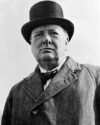Using a Source More Than Once
Updated on / dernière mise à jour : 12/09/2023

Answer
Here are some examples (Morstado's reference was created for the purpose of explaining how to include endnotes; his article does not exist in reality):
Example A: using three different sources for your paper: two books from Radford and one article from Morstado… 1- Robert Radford, Roman History, Morrisville: Lulu, 2007, p. 65.
Since it is the first time this Radford book is mentioned in your endnote section, the entire reference must be included.
2- Ibid., p. 67.
Ibid. is used because it is the same source as endnote 1 but the page number is different.
3- Enriqué Morstado, "Laughing in Theaters", in Best Laughing Locations, San Salvador: Why Corporation, 2002, p. 11.
Since it is the first time this Morstado article is mentioned in your endnote section, the entire reference must be included.
4- Radford, op.cit., p. 69.
Op.cit. is used because it is a book and refers to endnote number 1.
5- Idem.
Idem. is used because endnote 4 is exactly the same as endnote 5. Idem. means "Identical".
6- Morstado, loc.cit., p. 15.
Loc.cit. is used because it is an article and refers to endnote number 3.
7- Ibid., p. 16.
8- Robert Radford, Cognition Guide, Morrisville: Lulu, 2007, p. 162.
P.S.: be careful, this is another, different, Radford book that appears in your endnote section.
9- Morstado, loc.cit., p. 20.
10- Radford, Cognition Guide, p. 101.
To avoid confusion between the two distinct Radford books mentioned previously, you must indicate the author's name, the exact book title and, finally, the page number.
11- Radford, Roman History, p. 79.
12- Idem.
Example B: using a single source for your paper…
1- Robert Radford, Cognition Guide, Morrisville: Lulu, 2007, p. 65.
2- Ibid., p. 50.
3- Idem.
4- Idem.
5- Ibid., p. 55.
6- Ibid., p. 60.
7- Idem.





